3.1 Read About Social Responsibility
| Site: | Cowichan Valley School District - Moodle |
| Course: | ELA6, CSS, Sferrazza |
| Book: | 3.1 Read About Social Responsibility |
| Printed by: | Guest user |
| Date: | Friday, 28 November 2025, 1:17 AM |
Table of contents
- 3.1A Introducing Social Responsibility
- 3.1C Problems and Solutions - 10 Things You Can Do to Help the Earth
- 3.1D Youth Movements - A New Way of Thinking
- 3.1E Youth Movement - Hope Blooms
- 3.1F Cause and Effect - Hope Blooms - Part Two
- 3.1G Questioning Strategy - A Voice for the Spirit Bear
- 3.1H Pamphlets and Brochures - Great Pacific Garbage Patch
- 3.1I Random Acts of Kindness
- 3.1J Infographics
- 3.1K Media Literacy
3.1A Introducing Social Responsibility
Social responsibility involves many things. This unit is going to zoom in on the following question:
How can we contribute to community and care for the environment?
But you are just a kid? Kids (and everyone) can make a huge difference. While learning about and exploring non-fiction text, you will be inspired by ways in which people have shown social responsibility through their actions and ideas. But, first, let's get inspired by "Kid President" - just please don't click on the links in the video:
 |
Complete the "3.1A Social Responsibility" activity in your Learning Guide. Then, return to this online lesson. |
This unit focuses on non-fiction text.
What is nonfiction?
Nonfiction means based in fact. It includes many categories: biography, business, cooking, health and fitness, pets, crafts, home decorating, languages, travel, home improvement, religion, art and music, history, self-help, science, and more.
- It can have a range of purposes: inform, explain, instruct, describe, persuade.
- It can be read in any order.
- It has text features you will be learning more about.
- It has many forms and structures.
Look around your house. What nonfiction can you find? Walk around right now and try this.
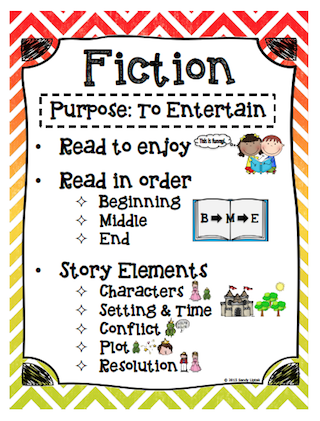
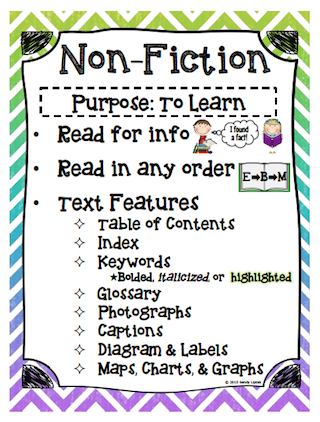
Categorize the following as fiction or nonfiction:
|
Recipe
Fable
Map
Novel
Manual for GPS
To-do List
|
Volunteering In Your Community Pamphlet
Newspaper Article About Youth Doing a River Clean-Up
Eco-Club Newsletter
Ingredients on Food Packaging
Percy Jackson novel
Biography of Terry Fox
|
3.1B Introducing Non-Fiction
This unit is build around non-fiction text (articles, videos, infographics) that help to answer the question: How can we contribute to community and care for the environment?
What features make nonfiction different from fiction?
Non-fiction texts often have a lot going on on each page. Good readers can use the features to zoom-in on certain features to find needed information: photos, bold headings, labels and captions, some bolded text. These are nonfiction text features and most nonfiction books include some of them.
Let’s look at a content page. Notice the way the page is laid out. It’s different than a fiction book. This page is from the book, How Engineers Find Solutions.
What is different about this page compared to most novels and fiction books you have read? How many differences can you notice?
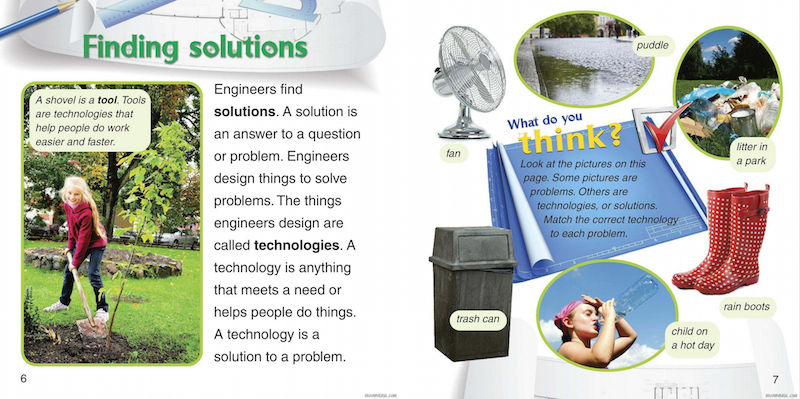
(Source: Johnson, Robin. How Engineers Find Solutions. Catharines, ON: Crabtree Publishing Company, 2014.)
Did you notice all of these differences?
-
-
- different kinds of printing on the page
- different sizes of printing on the page
- photographs have captions that explain what is being shown
-
Here is another example of a non-fiction text page. Some of the features are labelled:
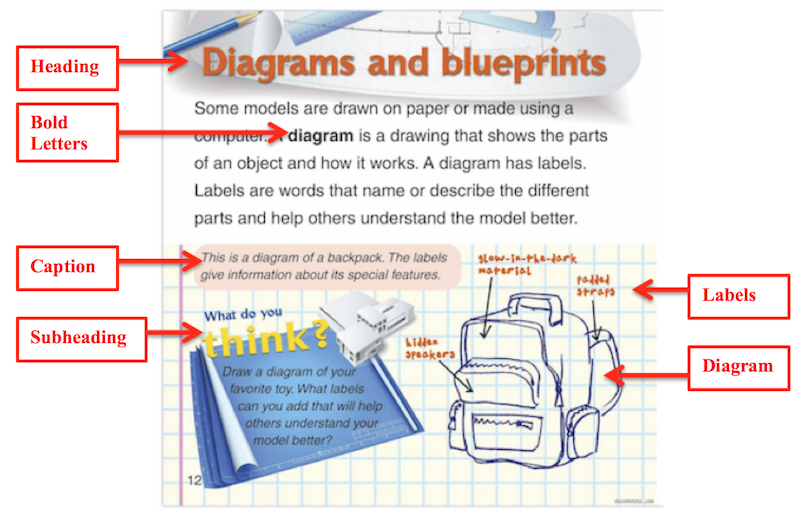
An author may choose graphic aids. How are graphic aids used?
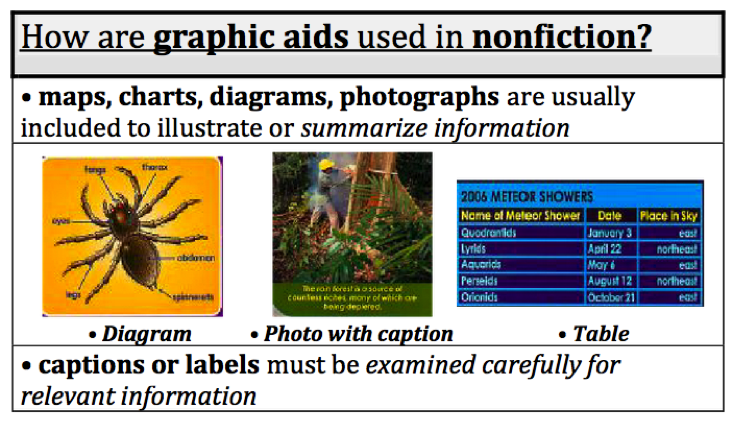
Learn more:
Why do you think nonfiction books have these special features but most fiction books do not?
A Venn Diagram can be used to compare and contrast to things or ideas. Here is a Venn diagram comparing fish and whales.
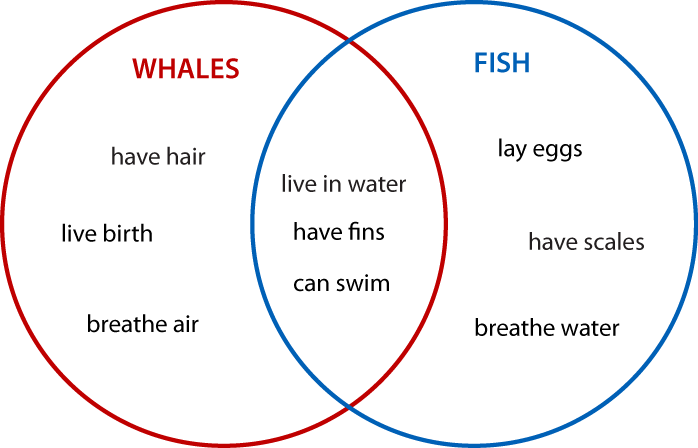
Notice that where the circles overlap, there are qualities that are the SAME. Where the circles are not overlapping, there are qualities that are DIFFERENT and belong to only fish or only whales.
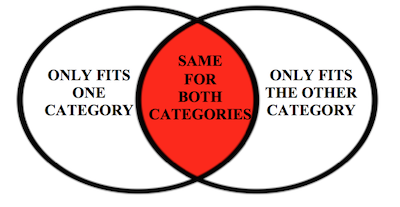
 |
In your Learning Guide, compare (things that are the same) and contrast (things that are different) fiction and nonfiction. What nonfiction features were pointed out in today’s lesson? What is different about fiction? What do they have in common? |
3.1C Problems and Solutions - 10 Things You Can Do to Help the Earth
This lesson features text that helps us to answer: How can we care for the environment?
1. Before reading "10 Things You Can Do to Help the Earth", take a look at the Table of Contents (CLICK HERE).
- Based on the table of contents, what you you think some of the ideas will be?
2. Next, zoom in on the text features pictured below. Titles, subtitles, various letters (bold, colours), and images help your mind to organize and understand the text.
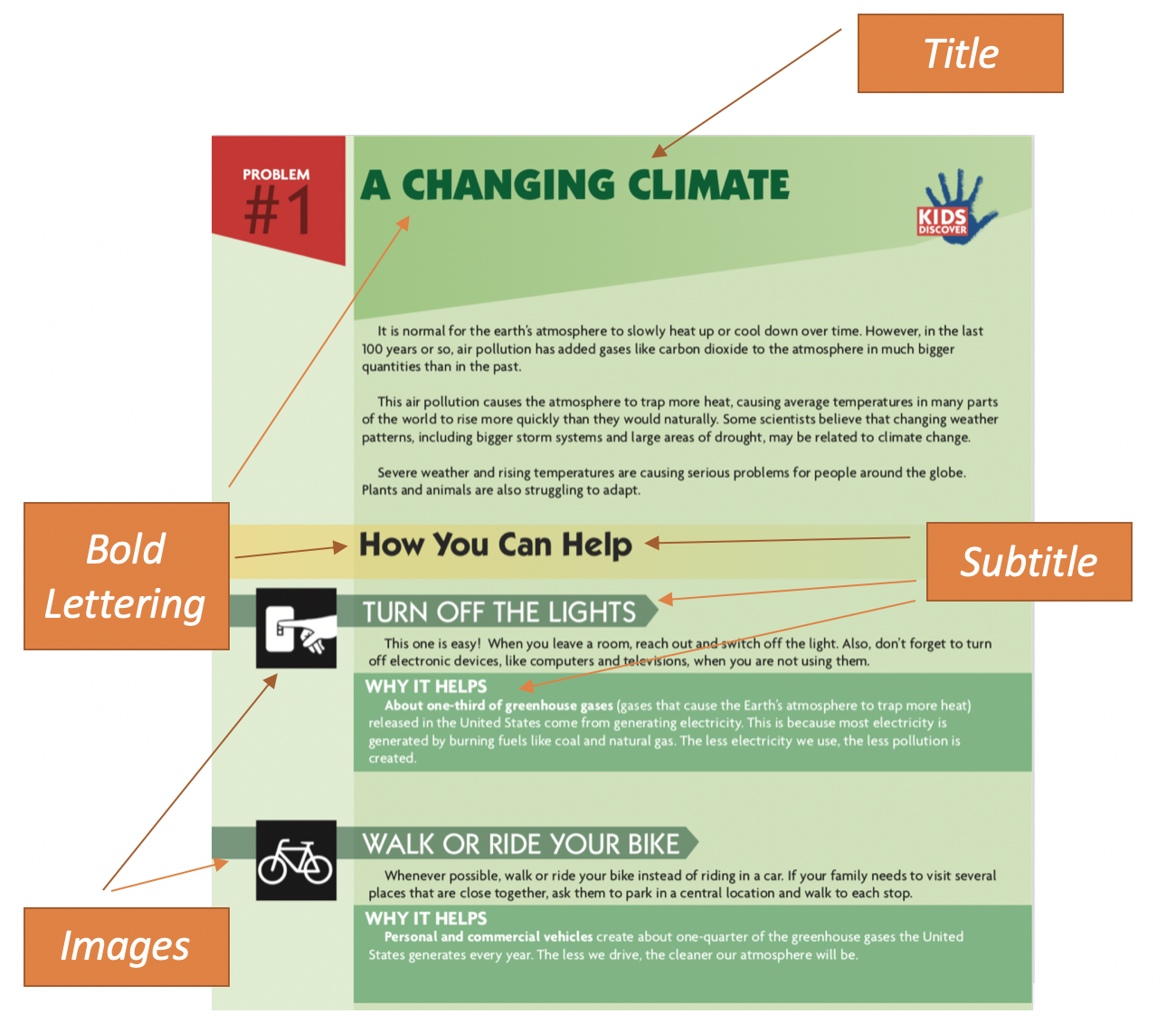
Now, you can use the article, Article: 10 Things You Can Do to Help the Earth, to complete the following:
3. First, scan the article. Just look at the titles and subtitles. Think about which areas you are familiar with.
4. There are various non-fiction text structures - cause and effect, sequential (in order), compare and contrast, and problem and solution are a few you will learn about. Which do you think this text will be? You can see "Problem #1" in the top left corner of the image above. That should give you a hint. Other ways to tell:
Signal Words
problem, issue, since, as a result, solution, idea, so, leads to, causes, purpose, conclude, in conclusion, research shows, the evidence is, one reason is, issues are, propose, conclude, resolved by
Tips
Ask yourself: what is the problem and what is the solution? Look for the problem first and then the solution.
The problems and solutions graphic organizer (below) can be used to outline problems and solutions.
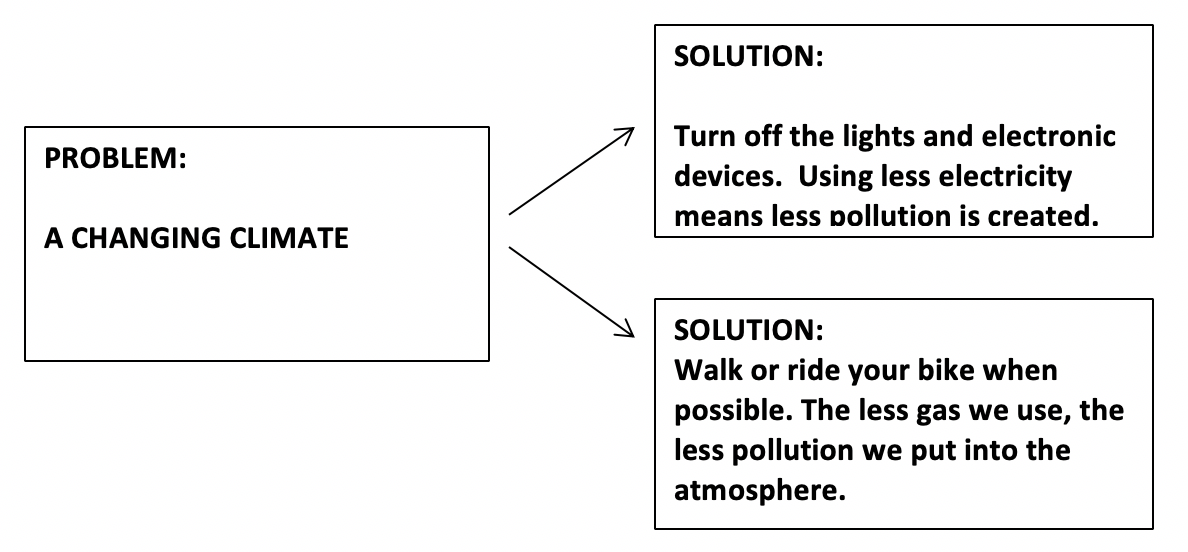
5. Next, as you read the entire article, think about what actions you are already doing and which you could add to your routines to increase your social responsibility. Zoom in to fill in the problem and solution graphic organizers in your learning guide.
 |
Article: 10 Things You Can Do to Help the Earth (Adapted from: https://www.kidsdiscover.com/infographics/earth-month-lesson/) Complete the Problems and Solutions activity in your Learning Guide. |
3.1D Youth Movements - A New Way of Thinking
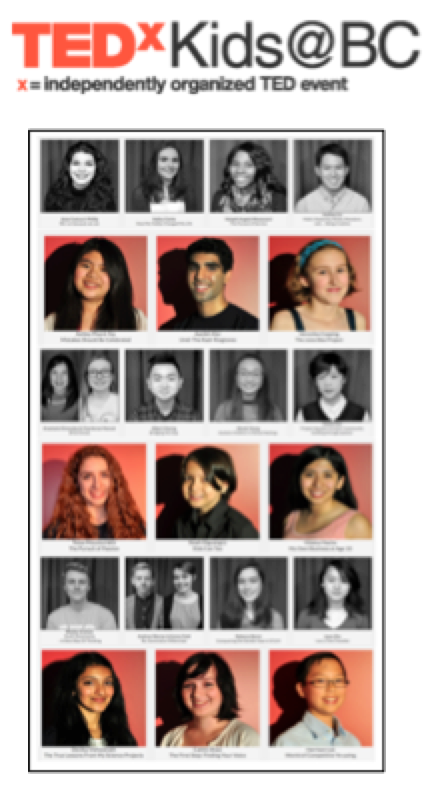 This lesson features inspiration from digital text that helps us to answer both parts of the question: How can we contribute to community and care for the environment?
This lesson features inspiration from digital text that helps us to answer both parts of the question: How can we contribute to community and care for the environment?
Digital text is basically any electronic (computer, tablet, radio, television) form written, oral (spoken), or visual (posters, photographs, infographics, timelines) text. Videos combine spoken word and visuals to give strong messages.
Ted Talks are events held all over the world that bring together people to listen to "talks" that spread ideas. TedXKids@BC was born in 2011. Each year since since 2011, up to 15 amazing BC young people have braved the stage to inspire other youth to strive to make the world a better place, to chase dreams, to overcome challenges, and to share lessons learned.
One 2016 event had youth shared information about taking on social responsibility by contributing to communities, solving problems, valuing diversity, and building relationships.
Do you think you are too young to make a difference? Can you become a catalyst of change?
In Youth Movements - A New Way of Thinking, Wesley Graham introduces two youth who have worked toward solving problems, and then he talks about how he found his passion and is now working toward solving a problem.
 |
1. Watch the video from beginning to end to get the big ideas. 2. Watch the video a second time. As you watch the video, in your Learning Guide, complete the responses. 3. Finally, reflect on the following: Do you think you are too young to make a difference? Can you become a catalyst of change? Do you have any neighbourhood, community, or world changing ideas? |
3.1E Youth Movement - Hope Blooms
This next two lessons feature texts (video, articles) that shows us how people (including youth) in Halifax, Nova Scotia, have responded to the question: How can we contribute to community and care for the environment?
Hope Blooms has received National and International Awards and recognition including being named one of Canada's top Changemakers for 2015; The Ernst and Young first place winner for Social Entrepreneurs of the year for Atlantic Canada 2016, and Innovator of the Year 2017 from Halifax Assistance Fund to name a few. They were also named one of the top 10 pitches of all time on the national CBC television show Dragons' Den.
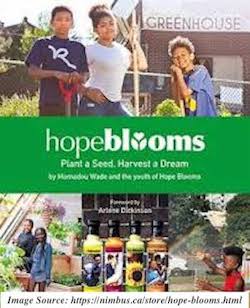 Hope Blooms is a social enterprise in Halifax, Nova Scotia.
Hope Blooms is a social enterprise in Halifax, Nova Scotia.
A social enterprise improves the well-being of people or places, and sometimes also builds job skills, and even friendships.
From Amazon.ca (description of the book, “Hope Blooms”): There is an old saying that it takes a village to raise a child, but Jessie Jollymore has experienced through the youth of Hope Blooms, an inner city initiative she founded that engages at-risk youth, that sometimes it takes the children to raise the village. A dietitian who worked in inner city health for 15 years, Jollymore witnessed the challenges people face every day with food security, isolation, discrimination, and poverty. An idea bloomed of creating sustainable, youth-driven micro-economies: growing local food systems, growing social enterprises, and mentoring youth to become leaders of change. This led to over 50 youth ages 6 to 18 leading the way in growing over 3,000 pounds of organic produce yearly for their community, building innovative outdoor classrooms, and building a successful Fresh Herb Dressing social enterprise, with 100% of proceeds going toward growing food, and scholarships for youth.
Hope Blooms is a social enterprise they built from the soil up, in which youth experienced the struggles of "creating something from nothing," successfully navigating the world of business, and ultimately building resilience and leaving behind a legacy.
How did this happen?
A pitch is a presentation of a business idea that needs money to put their idea into action. Investors who listen to the pitch sometimes allow others to use their money in exchange for a share of the profits (money made). Usually, it is adults giving a pitch.
On November 14, 2013, six youth from Hope Blooms pitched on Dragon’s Den, a show where people ask for investments in their business idea. The Halifax youth from Hope Blooms asked for $10 000 in exchange for 5% profits, in order to build a greenhouse that would allow them to grow their produce year round.
 |
1. Before watching the video, in your Learning Guide, record the definitions of social enterprise and pitch. 2. Then, as you watch the video, learn more about the story of Hope Blooms and whether or not they succeed in securing $10 000 from the investors of Dragon's Den. 3. Summarize the result of their pitch in your Learning Guide. |
Watch what happened (you may have to sit through a short ad, first):
3.1F Cause and Effect - Hope Blooms - Part Two
You've been reading about some great ways to contribute to community and care for the environment in this unit so far. What do you think are the effects of Hope Blooms since they got $40000 in support from the Dragon's Den? Cause and effect writing is one non-fiction text structure. If Hope Blooms is the cause, what are it's effects?
To understand what is meant by cause and effect, let's think about the invention of an elevator before digging deeper into Hope Blooms. Did you know: a cause can have many effects OR an effect can have many causes? Take a look:
Prereading: Good readers preview the text before reading it. Take a PEEK!
When you are reading and trying to figure out what information is important, you can use the PEEK strategy. This can help, before starting to read everything, to "take a PEEK" at some of the non-fiction text features and text so you can figure out, before you start to read, what things might be important. It is a great way to prepare for reading the page. What is this strategy and what does each letter stand for?
P - Pictures
Before reading the page, look at all the pictures (and captions, if they have them). Looking at the pictures helps to get your brain focused on what the page is about and things that might be important.
E - Each Heading
We know that information is sometimes organized into sections. Reading the titles and headings on the page helps get the brain focused on the information and even hints at what the "main ideas" are.
E - Ending
Sometimes at the end of an article, book, or chapter, there is an "ending" or concluding paragraph that retells important facts or ideas. Reading the ending of a nonfiction text first can help to focus the brain on what is important when reading the text from start to finish.
K - Know
What do you already know about this text? Remember, you haven't read it all yet, but sometimes if you think about what know from your PEEK, then it helps you to better understand what is important when you read the "whole thing".
 |
Download the article, Impact in the Community. 1. In your Learning Guide, use PEEK to help you to determine the main ideas of the article. 2. FIRST READING: After you've used PEEK, you can read the article in full to get the gist. Then complete the "First Reading" activity in your Learning Guide. 3. SECOND READING: As you reread, complete the cause and effect graphic organizer. Cause and effect signal words help the reader to connect the cause with the effects (or vice versa). These words include: as a result, because, due to, this led to, nevertheless, if, then, in order that, unless, since, so that, thus, therefore, accordingly, so, consequently, another reason, for this reason, on account of, some consequences are 4. Then, use the following videos in this online lesson to find a few more interesting details about how Hope Blooms has evolved. |
2015 Update:
2018 Book Launch and Update:
3.1G Questioning Strategy - A Voice for the Spirit Bear
This lesson features text that helps us to answer: How can we care for the environment?
In this lesson, you'll be learning and applying a reading strategy to an article about an impressive young person originally from Vancouver, BC who has a strong sense of social responsibility. The title of the article is: A Voice for the Spirit Bears. Do you know what a spirit bear is?
Active readers ask questions before, during, and after they read. Questioning leads the reader deeper into the text and encourages thinking. In this lesson, you will explore a quick strategy called Turning It Into A Question that can help you locate the main ideas from a piece of text.
You've learned to zoom in on text features so you are familiar with headings and subheadings. You've seen the headings and subheadings from A Voice for the Spirit Bear. We can use these headings to help focus our reading and to determine the main points of the article. Read on to find out how.
First, download the article.
Step One: Put the title on the chart. Turn that title into a question. (See the first and second row of the chart below.) It actually seemed to need three important questions. (in red).
Step Two: Turn all the subheadings into questions. The first subheading is done for you. You will continue this step...
|
Title, Heading, or Subheading |
Turning It Into A Question |
Reading to Answer the Question |
|
A Voice for the Spirit Bears |
What are spirit bears? Why do they need a voice? Who or what is their voice? |
|
|
This Story is Simon Jackson’s Story |
What is Simon's Story? Who is Simon Jackson? |
|
|
|
|
|
 |
In your Learning Guide, complete the task of turning all of the subheadings into questions. Then, without reading the article, return to this online lesson. |
Using the headings to help guide our reading is a way for us to find the important information in a text. Turning those headings into questions and answering the questions helps us focus on the important facts rather than the details.
The next step is to read the article to try to find the answers to the questions. The questions are guides to help determine the main ideas of the article. Try to add text-based evidence to support your answers. What does this mean? Take a look and find out.
 |
Step Three: As you read the article, try to find the answers by searching for find clues and textual evidence that support your answers to the questions. Reflection: Complete the "Reflection" in your Learning Guide. |
3.1H Pamphlets and Brochures - Great Pacific Garbage Patch
This lesson features text (pamphlet) that helps us to answer: How can we care for the environment?
Pamphlets and brochures are great ways to share information. Today, you will explore a brochure on the problem of the Great Pacific Garbage Patch. In only two pages, with three columns per page, you will learn about what it is, how it got there, what is in it, and how we can help to reduce the problem.
Pamphlets and brochures can have many non-fiction text features, with a nice balance of text and graphics:
|
|
|
Part of social responsibility is caring for the environment. In order to do this, we need to understand some of the problems and ways that kids can actually make a difference! By Zooming In on the subheadings in the brochure and using the Turning it Into a Question strategy, you can learn about the Great Pacific Garbage Patch and how you can help. The pamphlet you will download actually uses questions as headings. Evidence in the pamphlet will help you to find clues and evidence to answer the questions in the headings (and on the chart in your learning guide).
You have to imagine that the pamphlet is printed and folded into three so it opens up to the inside. You can actually print it and fold it if you like. If not, here is the order the pages are read:
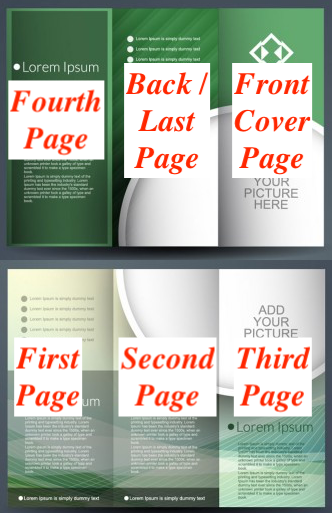
First, download the pamphlet.
The Great Pacific Garbage Patch
 |
Complete activities in your Learning Guide as you: 1. Look through the pamphlet. Notice which text features are used. Highlight them on the list in your Learning Guide. Predict the big ideas. 2. Notice you don't need to turn the headings into a question as they already are written as questions. 3. As you read the pamphlet, try to find the answers by searching for find clues and textual evidence that support your answers to the questions. Record this in your Learning Guide. |
3.1I Random Acts of Kindness
This lesson features text (video, article, list) that helps us to answer: How can we contribute to community?
In the lesson, you will use reading strategies (Take a PEEK, Turn It Into a Question) to learn about Random Acts of Kindness and the ripple effect.
Think of a time when you saw an act of kindness, experienced kindness, or at time when you showed someone else kindness. If possible, chat about the following questions with a home facilitator / family member:
- What was the act of kindness?
- Who was involved?
- Where were you?
- Why was this act kind?
The Random Acts of Kindness Foundation has the slogan “Help Turn the World Kind”. What does this mean?
 |
Download the article, Random Acts of Kindness. 1. Good readers preview the text before reading it. Before starting to read everything, you will "Take a PEEK" at some of the non-fiction text features and text so you can figure out, before you start to read, what things might be important. Complete this step in your Learning Guide. 2. By Zooming in on the subheadings in the article and using the Turning it Into a Question strategy, you can learn better focus your reading. Turn the headings into questions. Then read the article to answer the questions. 3. Then, look through the list of ideas of "Random Acts of Kindness for Youth". Pick two you think you could easily try. Record these in your Reflection in your Learning Guide. Over the next day or so, try at least one of your choices. Tell your teacher about how it went. |
3.1J Infographics
This lesson features infographics that help us to answer both parts of the question: How can we contribute to community and care for the environment?
Infographics are a popular way of sharing information. They are used everywhere; in newspapers, magazines, advertising, and websites. But what is an infographic? Watch this video (that is basically a moving infographic) and learn:
They can show different text structures, including:
- Description: Describes a person, place, thing, or idea.
- Cause and Effect: A cause plus possible effects OR an effect with possible causes.
- Problem and Solutions: An issue is presented and a one or more potential ways to fix it are explained.
- Sequence: Anything that is written in steps or in order of appearance.
- Compare and Contrast: The similarities (compare) and differences (contrast) between two or more subjects.
Each infographic below has a very different "theme" related to social responsibility. As you explore infographics about contributing to the community and caring for the environment, you will:
- Decide text structure is used on each infographic.
- Summarize the big idea and main points of each infographic.
- Then, reflect. What makes a good infographic? Which topic from the four infographics do you care about the most? Why?
 |
Use the links to the infographics to complete the activity in your Learning Guide. Complete the Reflections in the Learning Guide. Then complete the online "Text Structures" Quiz. |
3.1K Media Literacy
Did you complete the online "Text Structures" Quiz? If not, complete it before continuing in this lesson.
Being able to research online is a skill. There is SO MUCH information - often mixed with advertising - that it is hard to know what to focus on. What do you look at when you are doing online research?
- Do you read all of the text on the page?
- How do you use pictures to help you read?
- What do you look for on the homepage of a website?
- How do you choose what links to click?
The internet is a great place to learn about endangered animals. But when researching online, it is best to start with a plan. If you were to research an endangered animal, what would you want to find out?
 |
In your Learning Guide, complete "What Do I Do Online?" to think about what you look at when you are online. Next, record your three questions you may research for a report on an endangered animal. Then return to this online lesson. |
Before researching online, it is important to plan, monitor, and evaluate.
- With a plan, you know what you need to find out and are less likely to "get lost surfing".
- When researching, you can monitor: What information stands out? Should I skim or read more carefully? Does it make sense?
- It is important to evaluate: Does a link to you closer or further from your goal? Where else should I look? Is this the best place to find the information I need?
Questions a researcher may want answered about an endangered animal may include:
- Where is the animal found?
- What does it need to survive?
- Why is it endangered?
- How can people help to protect the animal and its habitat?
In this lesson, you will start by learning about the endangered Pacific Northwest Tree Octopus. Then you will learn some important tips for online research.
 |
Go to the website: Save the Pacific Northwest Tree Octopus In your Learning Guide, there is a plan. What do you need to find out? Take a few notes on the questions about the Pacific Northwest Tree Octopus. Then return to this online lesson. |
What an interesting creature! Had you heard about this octopus before? How do you know the information you find online is reliable and accurate?
Anyone can get a website and put information online. There is a lot of "fake news" and "fake research". If a person were to research "Climate Change", for example, there are many "fake news" sources that will deny the climate change crisis and say that climate has always changed. However, the credible science-based sources that will show that while over the course of the Earth’s 4.5-billion-year history, the climate has changed a lot, the rapid warming we’re seeing now can't be explained by natural cycles of warming and cooling. The kind of changes that would normally happen over hundreds of thousands of years are happening in decades. So, it is VITAL that readers can tell whether or not information is accurate!
So what about the Pacific Northwest Tree Octopus? How do I know if the website I used was a credible source? I can find out more about who put the information online - this is a screen shot of the credits for the Pacific Northwest Tree Octopus website:

If a person looks up the Kelvinic University, the Wild Haggis Conservation Society, and Lyle Zapato, the results look interesting. Take a look.
Is the Pacific Northwest Tree Octopus real or a hoax (as in fake)? If you said fake, you are correct! It does not even exist. There is no such creature. Did you think, at first, that there was? As you can see, it is critical to be able to tell if something you find online is "real" or "fake". Hoax websites are created to help you learn about this (and some people create them for fun), but not all "fake news" and misinformation is from fake websites. There are so many false claims that are disguised as news stories to help with advertising, for politics, and even to make people believe things about people, "medical news", or places!
The old formula used by police, journalists, and researchers – Who, What, When, Where, Why, and How – can be applied in cyberspace (online) to help identify quality online information sources. You can use this formula, too, to explore a few websites (provided here). You will decide if the information on three specific websites is real or not.
 |
Use: KNOWING WHAT’S WHAT AND WHAT’S NOT – THE 5 W’S (AND 1 “H”) OF CYBERSPACE to help you evaluate the websites below as you record your observations in your Learning Guide. Real or Hoax? Buy Dehydrated Water Real or Hoax? Vaquita - The World's Most Rare Marine Mammal Real or Hoax? Dog Island Then return to this online lesson. |
Check your answers:
Real or Hoax? Buy Dehydrated Water
Real or Hoax? Vaquita - The World's Most Rare Marine Mammal
While the examples in this lesson are kind of fun, fake news and misinformation is a serious issue. People can be lured into:
- misinformed political and other decisions/votes
- misinformed understanding of the world and science
- purchases of health food supplements that are not actually as safe as claimed or able to do what they claim to do
- unsafe actions
So, be a skeptic! Always check if information is accurate and if the source of information is credible and reliable!
 |
Check the Learning Guide over. Make sure everything is completed to the best of your ability. Then you can submit your Learning Guide and continue on to 3.2 Reading Projects. |